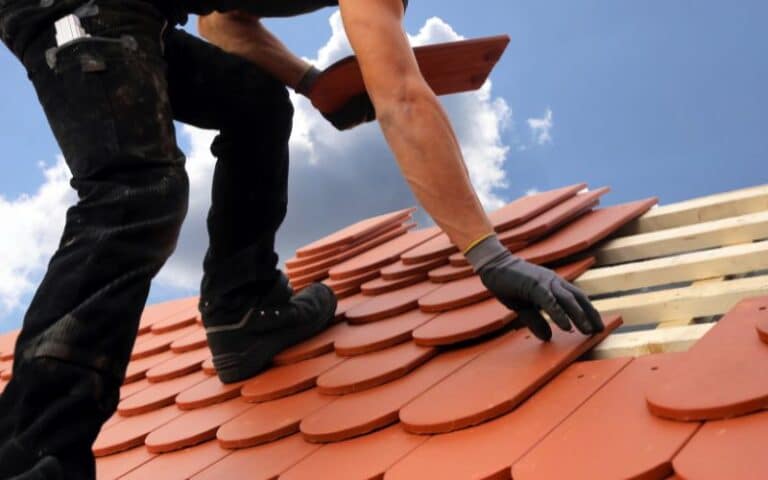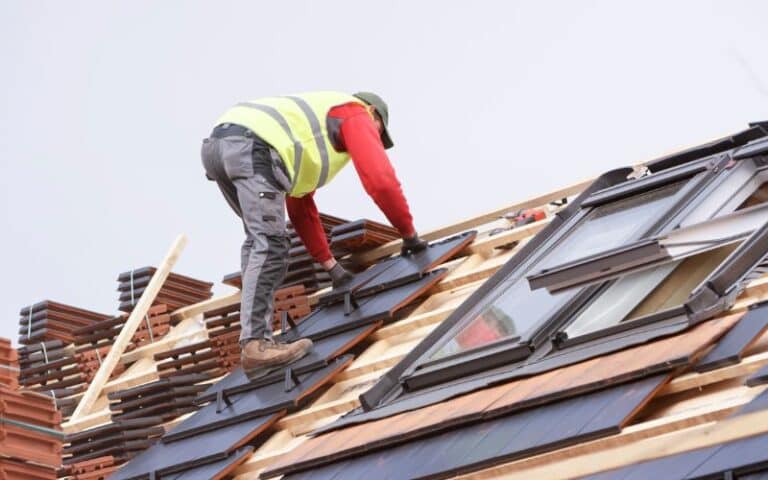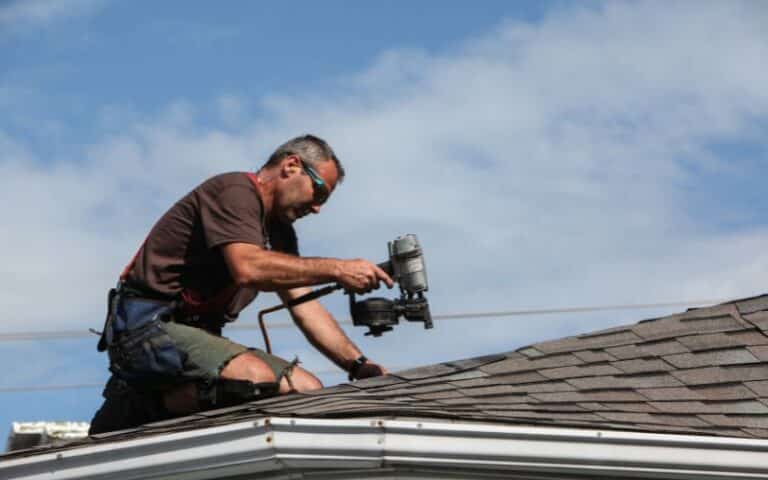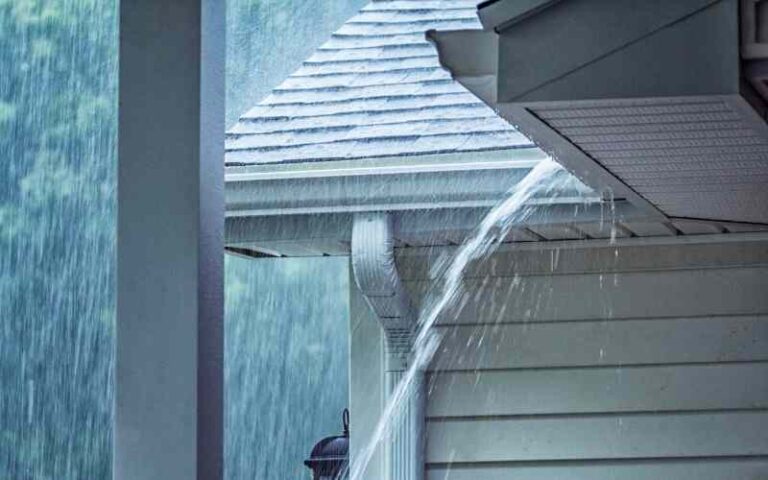Proper and timely maintenance of a high-quality and rightly installed flat roof can make it last up to 45 or even 50 years.
For homeowners as well as businesses, a flat roof serves as the first line of defense against the adverse forces of nature.
A flat roof inspection carried out the right way can help identify the need for roof repairs in time to prevent the requirement of a roof replacement. Read more to know whether roof inspection is necessary or not?
Regular flat roof inspections can extend the life of a flat roof as well. Whether you hire a roofer to inspect your roof or do it yourself, here are 7 crucial checks that need to be on the flat roof inspection checklist. Read more to know how often should the inspection be done?
Ready for a Roofing Quiz?
Things to Look For During a Flat Roof Inspection
The primary aim of flat roof inspections is to get a detailed review of the health of your roof. For this purpose, the following issues should be looked for as their presence signifies a need for roof repairs and, in extreme cases, a roof replacement.
Leaks
This one is obvious as one of the most significant flaws that can happen with a roof is leaks. However, even minor leaks can be highly problematic when it comes to a flat roof.
This is because a flat roof is more prone to water pooling on the surface as water finds it difficult to run off of it.
The periods of wet weather, as well as storms, can lead to standing water on a flat roof. This can cause small leaks to develop in the roof by exerting pressure on it and seeping into the roofing material.
Ignoring such leaks during a flat roof inspection can allow them to develop into a significant problem.
This issue is not specific to a single roof type and applies to all traditional and synthetic roofs. The problem can exacerbate through rusting in the case of a metal flat roof.
Seals
Another roof element that you want to offer a careful look to is the seals. Sealants are commonly used on flat roofs that are based either on cement or synthetic membranes.
The purpose of the use of sealants is to create a roofing system that is waterproof as it helps in water prevention on reglets and base flashing.
However, damaged, worn, or cracked sealant can be a major threat as it can lead to leaks. If your roof has been applied with tar or caulking, you need to check them for their effectiveness as well.
Give the coping joints, corners of penetrative vents, and plumbing collars a good look to ensure everything is in order.
Visible Surface Degradation
Weather is not the only challenge that a flat roof faces, as pressure resulting from rooftop equipment (such as HVAC vents), fallen leaves, birds and rodents, and even debris can damage it.
Additional weight is detrimental to a flat roof.
For this reason, it is vital to check for any visible signs of degradation on the surface of the roof during a flat roof inspection.
The signs may include rust, rotting, granular loss, blistering, small tears or punctures, etc., depending on the material of the roof.
Blocked Drains
Heavy rain can carry animal waste, loose roofing material, leaves, dust, etc., into the drains, leading to blockages. A blocked drain can make the issue of water pooling worse on a flat roof.
Drains are not always easy to inspect with a DIY flat roof inspection.
A professional roofer or roofing inspector can check drains for blockage with the use of a snake camera.
Blocked HVAC Vents
A blocked HVAC vent can cause damage through heating to not only the HVAC system itself but a roof as well. It can even cause certain materials to melt.
Check all the HVAC vents placed on your flat roof during a flat roof inspection and clean the ones that you find blocked.
Fungus or Mold
Algae, moss, fungus, or mold can only survive in moist conditions. So if you notice any of these, you want to get rid of them and check for the source of the moisture.
Remember, these things can spread quickly if you do not do something about them.
Mold or fungus weakens the membranes of a roof and damages its foundations, as well as wooden structures. They are also unhealthy for the occupants of the home.
Internal Structure Damage
Surface degradation and structural deterioration are two different things. While the former is easier to spot with an untrained eye, the latter usually requires a professional to identify.
It is important to look for signs, including cracked reglets or sealants, mildew or mold on joints, and damaged joists, that indicate structural degradation during a flat roof inspection.
Structural damage, more often than not, signifies the need for roof replacement and should be taken seriously. Any signs, even minor ones, of deterioration of the structure of a roof should be acted upon as soon as possible.
Importance of a Flat Roof Inspection
Regular flat roof inspections help homeowners and business owners ensure the protection of their families and assets, and employees, respectively.
Rain, hail storms, strong winds, heavy snow, and UV rays from the sun can damage a flat roof over time, and neglecting it can prove to be a huge mistake.
Small and minor roof issues, if left unattended, can quickly turn into major problems requiring costly roof repairs or roof replacement as well as threatening the safety of home-dwellers or employees.
Therefore, it is recommended that you perform a DIY roof inspection at least twice a year and after any significant weather event, as well as get a professional roofer to inspect your roof at least once every two years.
Related: How Long Does A Flat Rubber Roof Last?
How to Take Care of a Flat Roof?
Here are some simple yet effective steps to make sure your flat roof stays in good shape and efficiently carries out its primary function of protecting your home.
– Make sure to inspect each of the drains on your flat roof every fall and summer.
If they are blocked, fully or partially, clean them thoroughly so that water properly drains off and does not sit on your roof or try to find a leak point.
– Keep a lookout on the condition of the seals around the pipes on your flat roof and repair or replace them as soon as you notice them wearing out.
– Get rid of any birds, rodents, or any other animals that might be living on your roof as they can damage it in a significant manner.
– Trim any branches of trees that might be hanging over your flat roof or touching it.
Our Final Thoughts
A flat roof requires more care and a more thorough inspection than several other kinds of roofs.
Regular flat roof inspections can help you determine if there is a need for roof repairs or roof replacement and give you peace of mind that you and your loved ones are well-protected.
Make sure to include the above-mentioned checks in your flat roof inspection and get a professional roofer to inspect your roof at least once every two years.
Read more: Structolite Drying Time (Things You Should Know)






